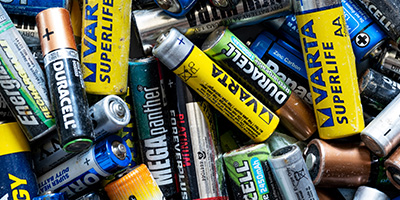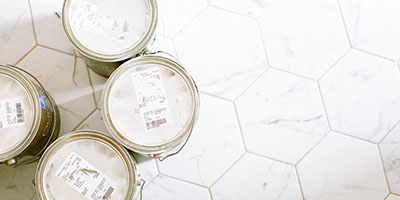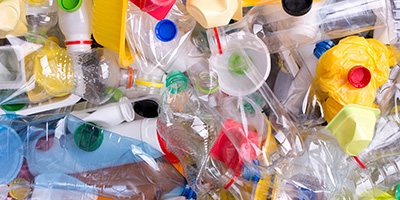The Complete Guide to Grease and Cooking Oil Disposal

How to Dispose of Cooking Oil and Grease
Frying up breakfast? Roasting your veggies in bacon grease for extra flavor? While cooking oil and grease add a savory taste to any meal, they can make a real mess in your kitchen. Make sure you know what to do with it after cooking, because incorrectly disposing of cooking oil can have expensive consequences, like an emergency call to your plumber.
Keep reading to learn how to get rid of bacon grease and cooking oil properly — including what not to do.
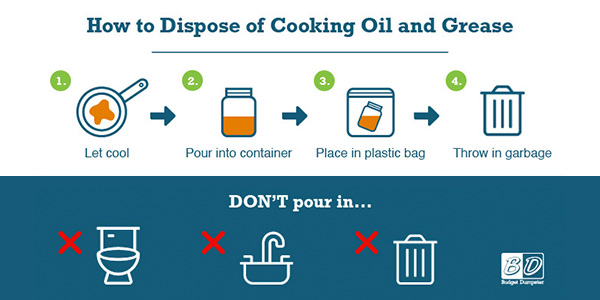
What to Do With Used Cooking Oil and Grease
1. Throw it Away
The best way to dispose of cooking oil and grease is simple — throw it in the trash. Follow these steps to dispose of these hot liquids safely:
- Let the oil or grease cool and solidify.
- Once cooled, scrape the grease into a container that can be thrown away.
- When the container is full, place it in a plastic bag to prevent leakage and then throw it in the garbage. For sustainability reasons, we recommend using a large container multiple times until it’s full.
Once you’ve gotten rid of most of the grease, use a paper towel to wipe down all pots, pans and dishes that touched the oil before rinsing them in the sink. Even small amounts of leftover grease are dangerous to your plumbing system because they will build up over time.

“Keep in mind that grease in drains, combined with food scraps from big meal preparation, is what makes our phones ring off the hook the day after Thanksgiving. That’s why it’s our busiest day of the year.”
Paul Abrams | Roto-Rooter Services Co.
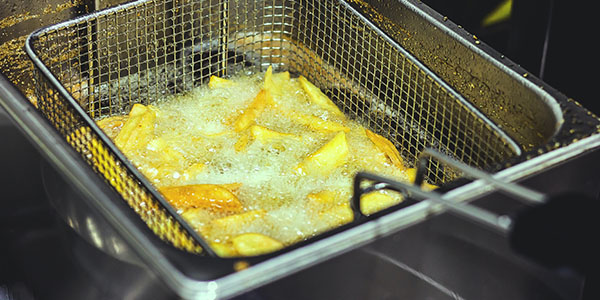
2. Reuse or Recycle Your Cooking Oil
Not ready to throw away your grease just yet? Store the used cooking oil. You can eventually use it again or recycle it at a local collection site.
How to Reuse Cooking Oil at Home
As long as you’ve cooked the oil correctly and didn’t heat it past its smoke point, you can repurpose your oil and fats. Use these three simple steps to reuse cooking oil:
- Strain the semi-warm oil using a cheesecloth, paper towels or coffee filters to remove any food particles.
- Store in an airtight container in the fridge, freezer or other cool dark place.
- Test the cooking grease before using by smelling it to make sure it’s not rancid.
You can reuse cooking oil for deep frying, pan frying, sautéing and baking. After a few uses or when it goes bad, dispose of cooking oil in your trash can, as instructed above.
How to Recycle Used Cooking Oil at a Collection Site
Some municipalities collect used kitchen grease and oil for recycling. Use this recycling locator to find a facility near you. By doing this, you’ll keep grease out of the landfill and turn it into a form of alternative energy, like biodiesel. Recycle your used cooking oil using these three steps:
- Strain the oil to remove food particles.
- Store in a sealable container.
- Deliver it to your local collection site.
When you’re recycling through a collection facility, you can usually mix different oils and fats in one container — unless your collection site tells you differently. The container doesn’t need to be refrigerated, so this is an easy way to get rid of oil after frying.
Getting rid of big trash items? Read our guide to dispose of them properly.
What Not to Do With Used Cooking Oil
Your trash can is the best way to dispose of cooking oil, but people often try to get rid of grease in other ways that aren’t safe for the environment or your plumbing system. Follow these important rules when disposing of grease:
1. Don't Pour Cooking Oil Down the Drain
You can never pour cooking oil down the drain or toilet. This clogs your plumbing system and contributes to larger clogs in the municipal lines, which can cause thousands of dollars’ worth of damage.
Oil and grease may be liquid when hot, but they will cool inside your pipes, congealing and gathering other particles. As the grease collection grows, it keeps water from flowing freely. This leads to water backups in your kitchen and bathroom.

“Never pour cooking oil or grease down a drain. Hot cooking oil will solidify inside the drainpipe just like candle wax, which gradually decreases the diameter of the pipe with a greasy buildup until the pipe stops draining altogether.”
Paul Abrams | Roto-Rooter Services Co.
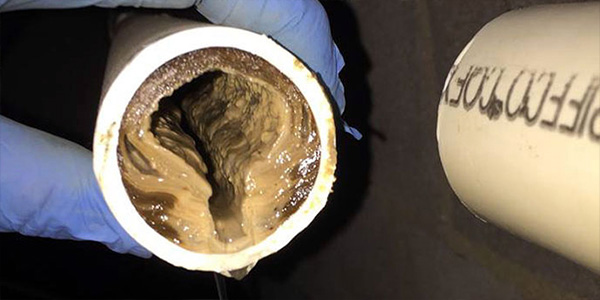
What to Do if You Pour Oil Down the Drain
Accidents happen when it comes to cooking oil disposal, especially if guests help you tidy up after a holiday meal.
If grease or cooking oil makes its way into your sink or down your toilet, take immediate action with these tips from Roto-Rooter:
- Pour baking soda and white vinegar down the drain to clear some of the grease away.
- Try an enzyme-based drain cleaner, like Roto-Rooter’s Pipe Shield, which helps neutralize grease in both metal and PVC pipes.
If your sink or toilet continues to run slowly, use a plunger to further dislodge the grease clog. Not having any luck with these fixes? Unfortunately, you will need to call a plumber.
2. Don’t Dump Cooking Oil in the Ground
If you want to do oil and bacon grease disposal properly, you can’t pour it outside. Dumping cooking oil in the ground causes clogs in the sewer system.
Additionally, animal fats and vegetable oils create issues for wildlife when left outside, according to the U.S. Environmental Protection Agency.
3. Don’t Dispose of Cooking Oil in Your Compost Pile
While small amounts of vegetable oils in your compost may be fine, a large amount will cause airflow and moisture issues, ruining your fertilizer.
Animal fats should be kept out of your compost pile as well, because they smell, attract vermin and cause other problems that make compost unhealthy. No matter what type of oil or grease you’re using, don’t dispose of it in your compost pile.

